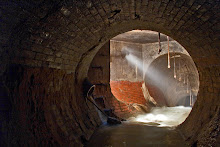I have chosen to analyse the language in the skating scene of The Skin of a Lion, in which Patrick observes the loggers skating late at night. The piece is stylistically intriguing, as it is littered with language devices used to create particular effects, and conjure specific feelings within the reader. By analysing metaphors, symbolism and lexical choices, we form a greater, in-depth understanding of the characters, and therefore the novel as a whole.
In 'The Skating Scene' many metaphors are utilised, creating a sense of poeticism and an almost magical image. A very powerful metaphor seen in this passage is, 'This was against the night'. (pg. 22). This lays emphasis upon the light and dark imagery found in this passage. Ondaatje highlights that for Patrick, day is work and night is rest, however, he sees the loggers skating and having fun at night. They are deviating against what Patrick has understood as day and night. It could be read as them showing him a new side to life that he is mesmerised by. Excitement is depicted through the pace of the passage. As the loggers are skating, the tempo if the language increases, and later decelerates, as he returns home to his routine life. By resisting the conventions of night, the loggers are essentially breaking the rules, 'Their lanterns replaced them with new rushes which let them go further past boundaries' (pg. 22). Patrick breeches boundaries as he sets alight the Muskoka Hotel (pg.168). Rather then taking up the position of the observer as usual, he actually intervenes and revolts 'against the night.’ By comparing Patrick in 'The Skating Scene' to Patrick at the Muskoka Hotel, the reader notes how he has evolved throughout the progression of the novel.
Another powerful metaphor in this particular scene is, 'A moon lost in the thickness of clouds so it did not shine a path for him towards the trees'. (pg 20). This metaphor again lays emphasis upon the light and dark imagery in the scene. Despite the fact that there is no path for Patrick to follow, he still finds his way to the skaters by travelling towards the light from their lanterns. He is attracted to the light much like a moth is to a flame. Additionally, he is like a moth in the way that he enjoys the darkness, in the respect that his character seems to 'come out' at night. The fire he creates at the Muskoka Hotel and the attempted bombing of the waterworks both happen at night and are both exemplary aspects of him acting out of character.
Symbolism frequents throughout ‘The Skin of a Lion’. I believe Skating to be the most prevalent symbolic act in this extract, as it represents liberation and freedom from convention. When you are skating, you are in control of your movements. You are free to do and try whatever you desire. The concept of freedom can also be related to Caravaggio, who while in prison, has to conform to strict rules and whose freedom has been stripped from him. The only way to re-establish his freedom is to escape. For the loggers, the only way to feel emancipated is to skate at night. Phrases and lexical usage to describe the men skating depicts the way in which skating is like a dance, 'One man waltzing with his fire', (pg 22), 'each step seemed graceless and slow', (pg 21), and 'they could leap into the air' (pg 21). As dance is often associated with freedom, perhaps this is why Ondaatje draw a parallel between the two acts.
Subscribe to:
Post Comments (Atom)

2 comments:
Freedom is an idea that’s not really been covered in other blog posts here, but it’s a helpful one to introduce given that the novel deals in part with the constraints that human beings have to live and work under. Those who perform the job of dyeing leather only do so out of extreme financial need; Patrick and his father plunge their bodies and faces into ice-cold water to rescue a cow because they cannot afford to lose the animal; there are lots of other examples. So the freedom exercised by the loggers as they skate could be seen in sharp contrast to the work they have to perform in order to survive. It’s an opposition that also plays out in the scene inside the waterworks where Alice is the life-size puppet: the Macedonians are not supposed to hold meetings and discuss things in a language other than English but they manage to break free of this constraint by meeting at the waterworks and gathering around a performance that does not need language to be understood. One of the things the novel asks (& shows) us is what kinds of freedom exists outside the realm of capital and the state. You talk about breaching boundaries, & I’d agree that these and other images of freedom and spontaneity often serve to point out boundary lines that some but not others in the novel are constrained by. Ambrose, for example, is the prime example of someone who successfully breaks free of just about everything except death.
[Comment from Asim, who's having computer issues]
I think Ondaatje is mesmerised by the night and he really uses it quite stylistically in parts of his the novel. His fascination is similar to Fyodor Dostoevsky’s in “White Nights” in the way that the night has a really magical quality about it. I do agree with you about the miners pushing boundaries by skating at night because it’s something outside of Patrick’s understanding of the “order of things” (his routine) but I don't think it's because of what you mentioned. I think Patrick as a character is still trying to figure out the dualities of what the night and day actually mean to him and how true what his current beliefs are about it.
Post a Comment